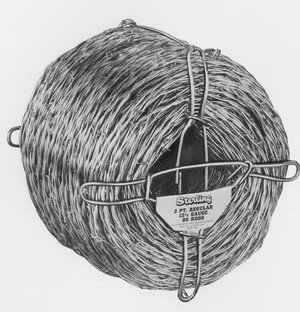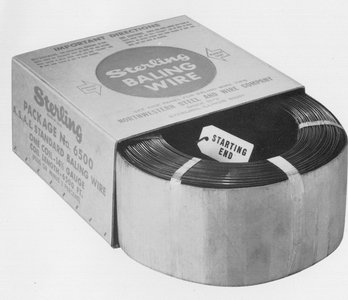Northwestern Barb Wire was established in Rock Falls IL
The first home of the Northwestern Barb Wire Company was secured by the officers of the company, in 1897, in an old wagon plant located in Rock Falls. The building was next to an elevator and flour mill owned by Lloyd Dillon, Washington Dillon’s older brother. The building’s had been constructed of stone quarried from a bed of the Rock River.
A basic reason for starting the mill in that particular location was the availability of water power from the nearby Rock River. Water power was developed originally and was provided on the Sterling side of the river by the Sterling Hydraulic Company. Half interest in the Hydraulic Company was sold to A.P. Smith, founder of Rock Falls. However, when he started the town of Rock Falls in 1867, he built a mill race on the south side of the river to serve industry in the new community.
The importance of having water power is evident considering the fact Thomas Edison invented the incandescent light that same year the Northwestern Barb Wire Company was incorporated in 1879. The date of the first electric plant in Sterling was 1890. The first gasoline engine made for sale was built in Sterling in 1886. So, the only choices for dependable power in the year 1879, were steam and water.
Even so, most of the work was done by hand during that period and the Northwestern Barb Wire Company had a work force of 10 persons. Where production is concerned, the work began turning out about 60 spools of barb wire per a 24 hour day.
Another major advantage of the particular period of time was the accessibility of two railroads in the Sterling and Rock Falls community in which to provide excellent shipping facilities for projects manufactured locally.
Source, Daily Gazette – Original story slightly modified by Dana Fellows ~ 2011


